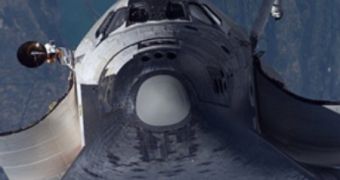Spacewalks may provide a unique experience and only astronauts know what it feels like to know there is nothing between you and the Earth or how it feels to look at the Moon and at an entire continent the next moment.
It's also true that only they know how much work a spacewalk is all about, as station Cmdr. Fyodor Yurchikhin and astronaut Clay Anderson, who are getting ready for the next spacewalk, this Monday, could tell you.
NASA controllers in Houston announced that the ISS crew is preparing spacewalk tools and reviewing spacesuit systems for the upcoming mission, the first for Anderson and the third for Yurchikhin, who has many hours of work in space on his record.
Last month, Yucrchikhin and another Russian astronaut on board the International Space Station (ISS) walked out into space and climbed on the station to install deflector shields, in fact protective panels designed to shield the orbiting station from dangerous space debris and small meteorites.
Sunita Williams is the record-holder for most hours outside a spacecraft by a female by completing four spacewalks during Expedition 14 with a total time of 29 hours, 17 minutes.
The two astronauts are also preparing for the August arrival of space shuttle Endeavour, so they have been packing items that will be returned to Earth aboard the shuttle. For the arrival, Anderson has been practicing the Rendezvous Pitch Maneuver photography with a digital camera, performed by the space shuttle prior to docking with the International Space Station (ISS).
Soon, the hard work during spacewalks will be made easier, with the completion of Eurobot, an ESA multi-jointed three-armed assistant, designed to take over some of the tasks currently undertaken by astronauts.
Since 1961, more than 400 human beings have ventured into space, most of them during maintenance missions for space shuttles and space stations like the ISS and the late Russian MIR station.

 14 DAY TRIAL //
14 DAY TRIAL //